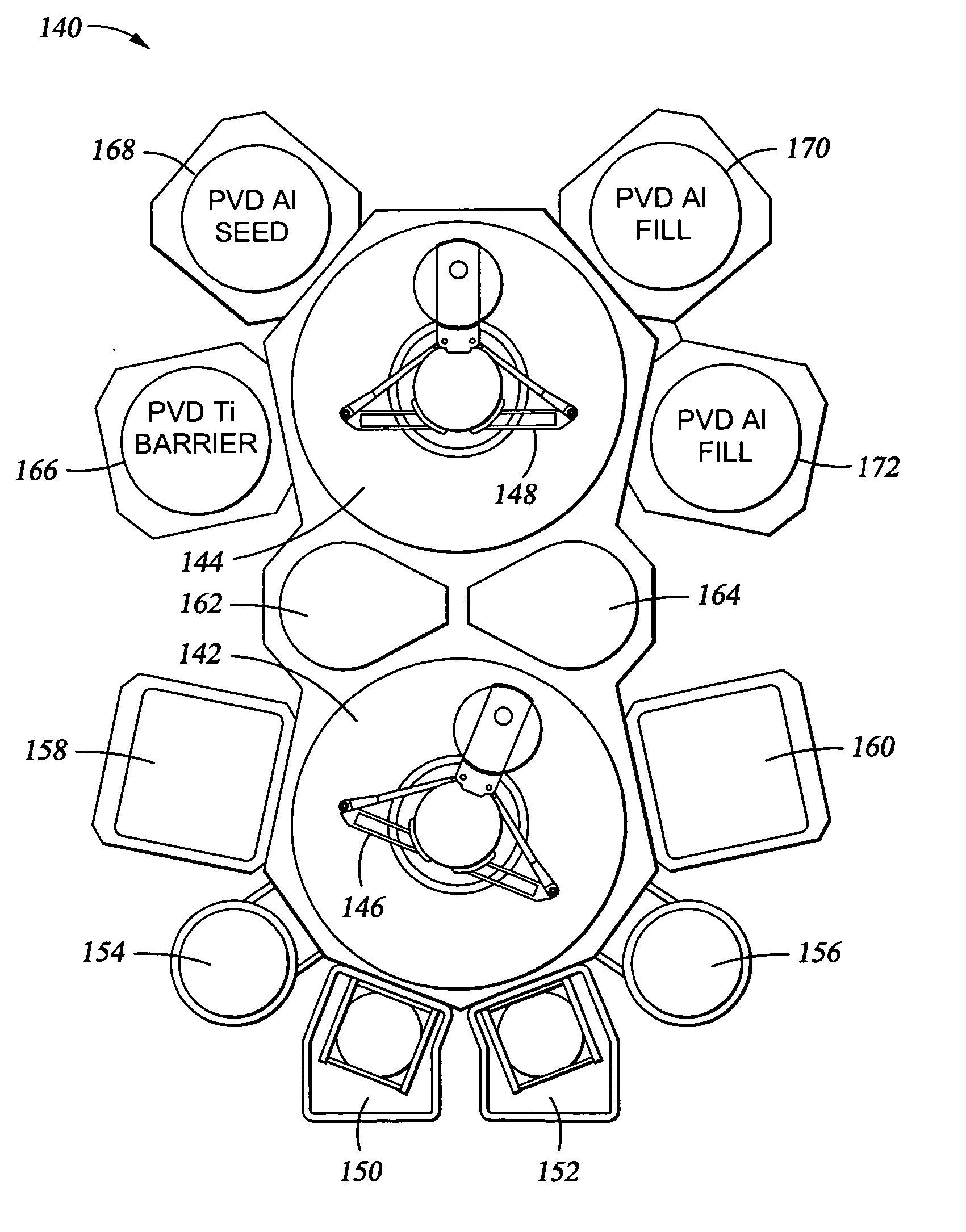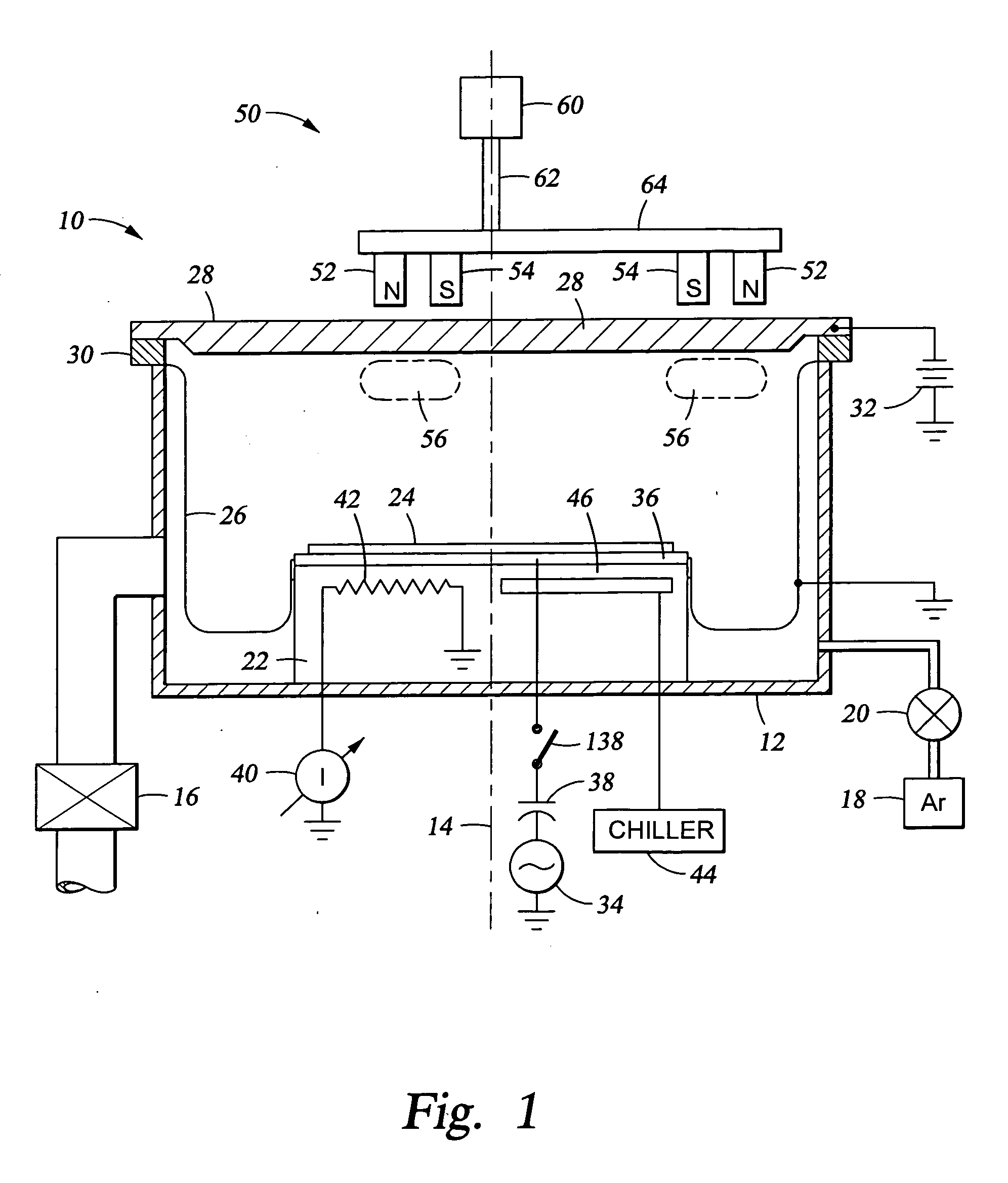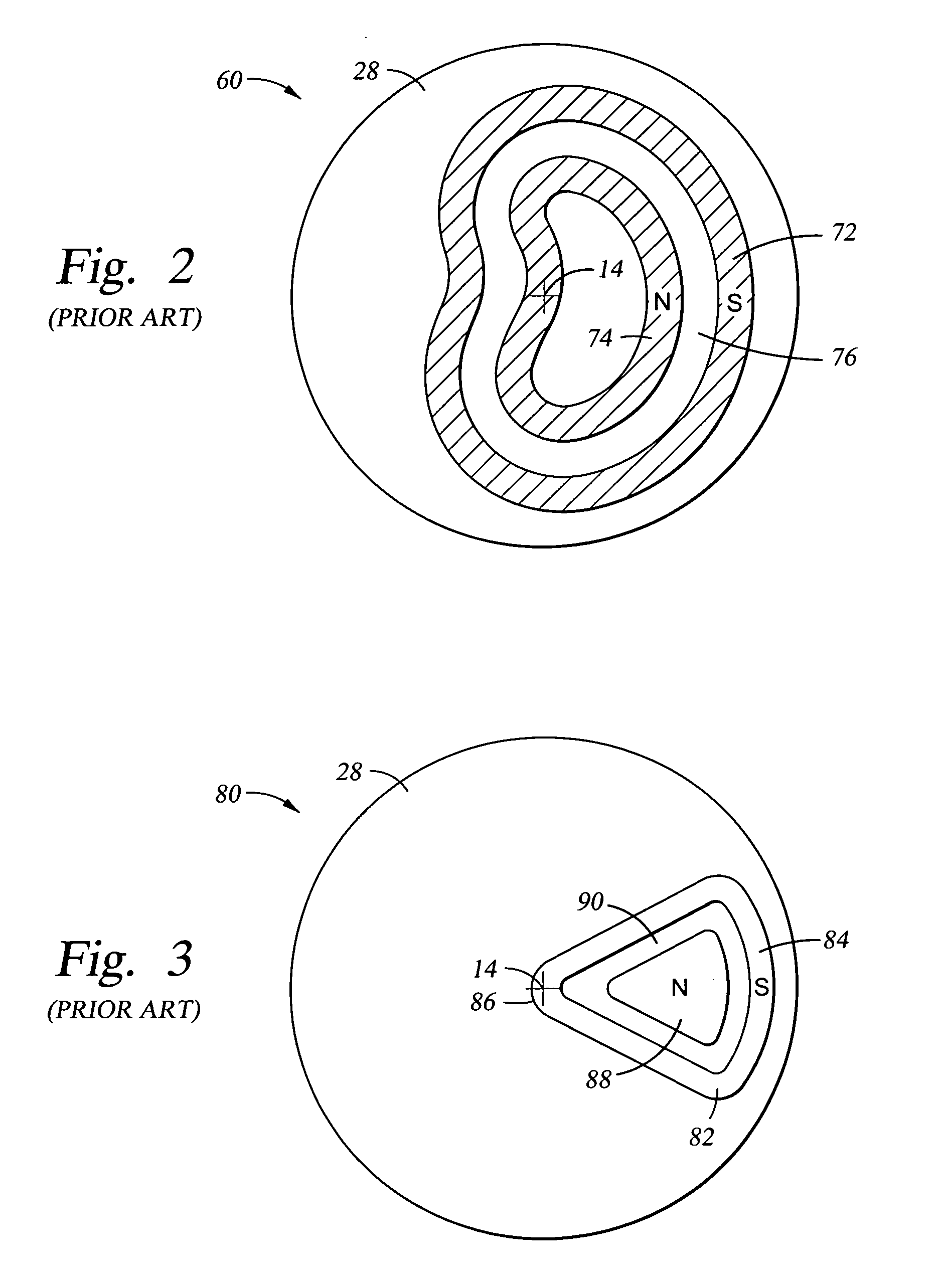Aluminum sputtering while biasing wafer
a technology of biasing wafers and aluminum sputtering, which is applied in the direction of vacuum evaporation coatings, electrolysis components, coatings, etc., can solve the problems of large unbalanced magnetron, large unbalanced magnetron, and general isotropic flux pattern of neutral sputter atoms unsuitable for filling high aspect-ratio holes
- Summary
- Abstract
- Description
- Claims
- Application Information
AI Technical Summary
Benefits of technology
Problems solved by technology
Method used
Image
Examples
Embodiment Construction
[0029] In one aspect of the invention and, illustrated in the cross-sectional view of an aluminum metallization structure in FIG. 5, an aluminum sputter fill process is divided into the sputter deposition of a thin aluminum seed layer 120 and a subsequent sputter deposition of a thicker aluminum fill layer 122. The deposition of these two different layers 120, 122 having significantly different characteristics is achieved by a significant change of the sputtering conditions between the two steps.
[0030] A broad aspect of the invention includes a cold, biased sputter deposition process for depositing aluminum, for example, to form the thin, nearly conformal seed layer 120 deep within a narrow hole while the wafer 106 is biased negatively to draw ionized aluminum sputter atoms deep within the hole and also while the wafer 106 is maintained at a relatively low temperature so that the aluminum sputter atoms stick to the barrier layer 108 on the hole sidewalls.
[0031] The cold, biased al...
PUM
| Property | Measurement | Unit |
|---|---|---|
| Temperature | aaaaa | aaaaa |
| Temperature | aaaaa | aaaaa |
| Temperature | aaaaa | aaaaa |
Abstract
Description
Claims
Application Information
 Login to View More
Login to View More - Generate Ideas
- Intellectual Property
- Life Sciences
- Materials
- Tech Scout
- Unparalleled Data Quality
- Higher Quality Content
- 60% Fewer Hallucinations
Browse by: Latest US Patents, China's latest patents, Technical Efficacy Thesaurus, Application Domain, Technology Topic, Popular Technical Reports.
© 2025 PatSnap. All rights reserved.Legal|Privacy policy|Modern Slavery Act Transparency Statement|Sitemap|About US| Contact US: help@patsnap.com



